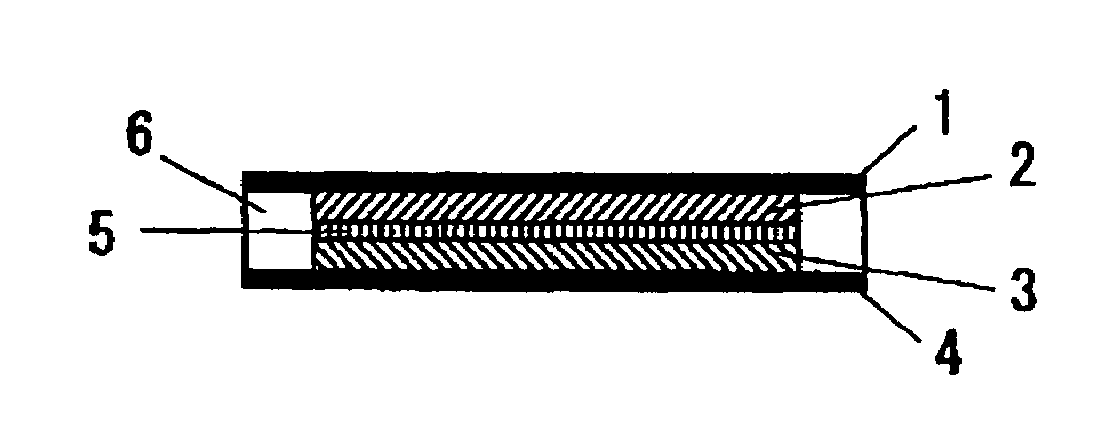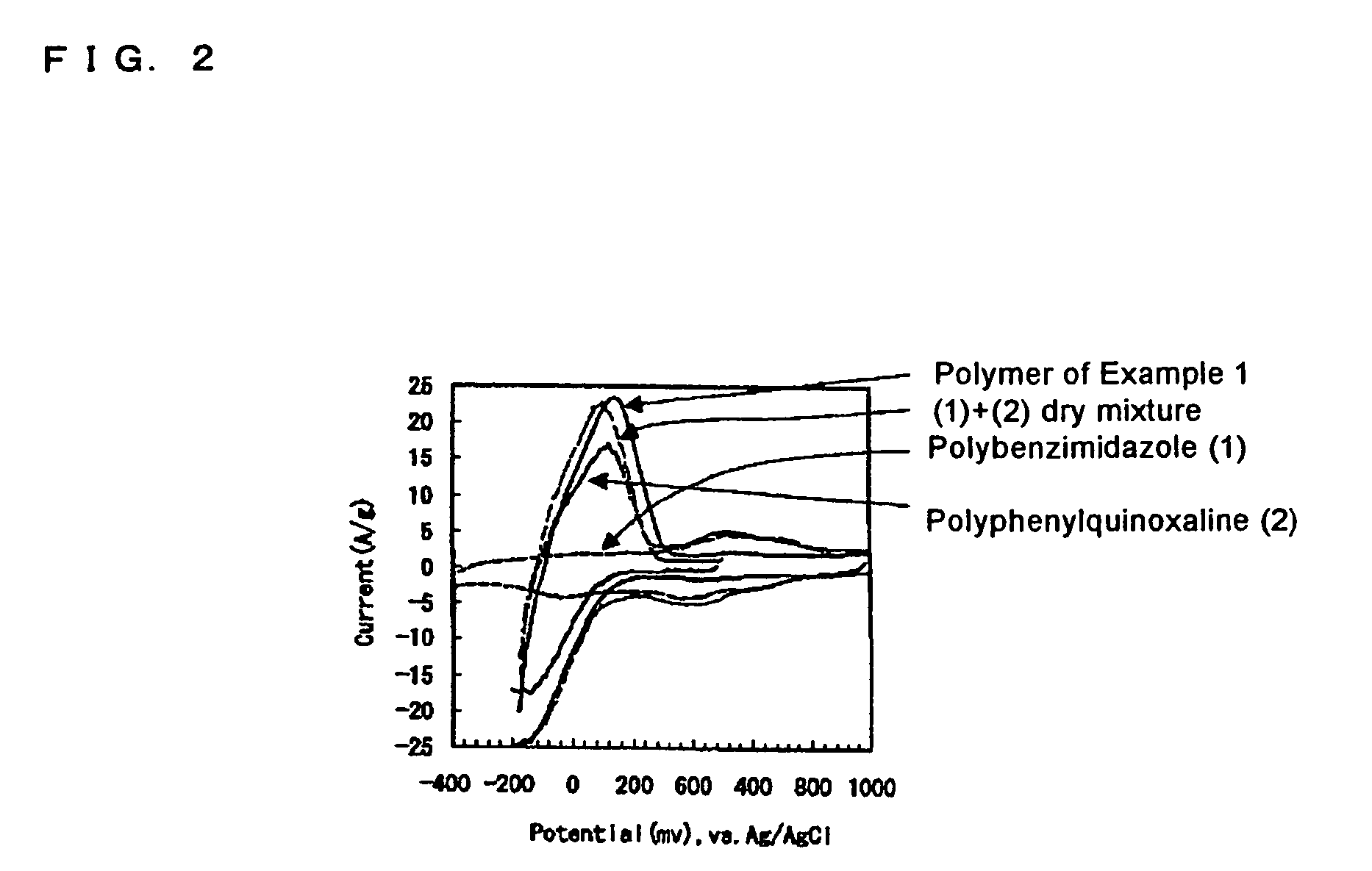Polymers and electrochemical cell therewith
a polymer and electrochemical cell technology, applied in the field of conductive polymers, can solve the problems of deterioration of charge/discharge cycle properties, and significant reduction of electron conductivity, so as to maximize the charge/discharge cycle properties of heterocyclic compounds, improve the charge/discharge cycle properties, and reduce internal resistance
- Summary
- Abstract
- Description
- Claims
- Application Information
AI Technical Summary
Benefits of technology
Problems solved by technology
Method used
Image
Examples
example 1
[0119]A proton-conducting compound, 5-cyanoindole trimer (formula (26)), was selected as a cathodic active material; a carbon fiber (VGCF®, Showa Denko K. K.) was selected as a conduction auxiliary; PVDF(an average molecular weight: 1100) was selected as a binder. These are weighed in a weight ratio of 69 / 23 / 8 in this order, and the mixture was mixed with stirring by a blender. Then, the mixed powder was placed in a mold with a given size, and then pressure-formed at 200° C. to provide a solid electrode which was used as a cathode 2.
[0120]For forming an anode, a proton-conducting polymer compound, a polyphenylquinoxaline-polybenzimidazole block copolymer, was selected as an anodic active material; a particulate carbon black (Ketjen Black International, trade name: Ketjen Black EC600JD) was selected as a conduction auxiliary. These are weighed in a weight ratio of 75 / 25 in this order, and the mixture was mixed with stirring by a blender. Then, an anode 3 was formed as described for t...
example 2
[0123]A polymer was prepared as follows. A polyphenylquinoxaline (formula (13)) having a weight average molecular weight of 25,000 and a polybenzimidazole (formula (22)) having a weight average molecular weight of 25,000 were prepared by a known polymerization process.
[0124]A subsequent procedure was conducted as described in Example 1, to prepare a block copolymer having a weight average molecular weight of 50,000 in which a weight ratio of polyphenylquinoxaline / polybenzimidazole was 50 / 50 and a polymerization unit number was 2.
[0125]An electrochemical cell was formed as described in Example 1, except that the block copolymer was used as an anodic active material, and was evaluated as described in Example 1.
example 3
[0126]A polymer was prepared as follows. A polyphenylquinoxaline (formula (13)) having a weight average molecular weight of 25,000 was prepared by a known polymerization process. Using a solution of the homopolymer in m-cresol, a polybenzimidazole (formula (22)) was prepared by a known polymerization process to give a block copolymer having a weight average molecular weight of 50,000 in which a weight ratio of polyphenylquinoxaline / polybenzimidazole was 50 / 50, the polybenzimidazole was attached to both ends of the polyphenylquinoxaline and a polymerization unit number was 3. An electrochemical cell was formed as described in Example 1, except that the block copolymer was used as an anodic active material, and was evaluated as described in Example 1.
PUM
| Property | Measurement | Unit |
|---|---|---|
| sweep voltage | aaaaa | aaaaa |
| temperature | aaaaa | aaaaa |
| temperature | aaaaa | aaaaa |
Abstract
Description
Claims
Application Information
 Login to View More
Login to View More - R&D
- Intellectual Property
- Life Sciences
- Materials
- Tech Scout
- Unparalleled Data Quality
- Higher Quality Content
- 60% Fewer Hallucinations
Browse by: Latest US Patents, China's latest patents, Technical Efficacy Thesaurus, Application Domain, Technology Topic, Popular Technical Reports.
© 2025 PatSnap. All rights reserved.Legal|Privacy policy|Modern Slavery Act Transparency Statement|Sitemap|About US| Contact US: help@patsnap.com



